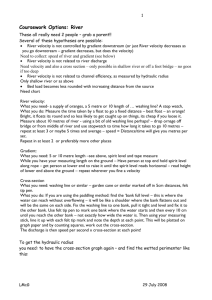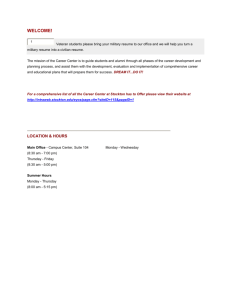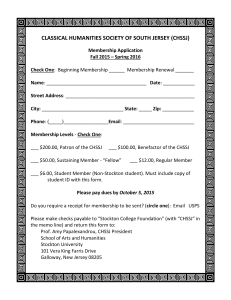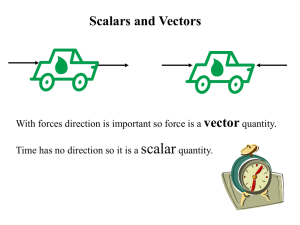Rivers fieldwork task
advertisement
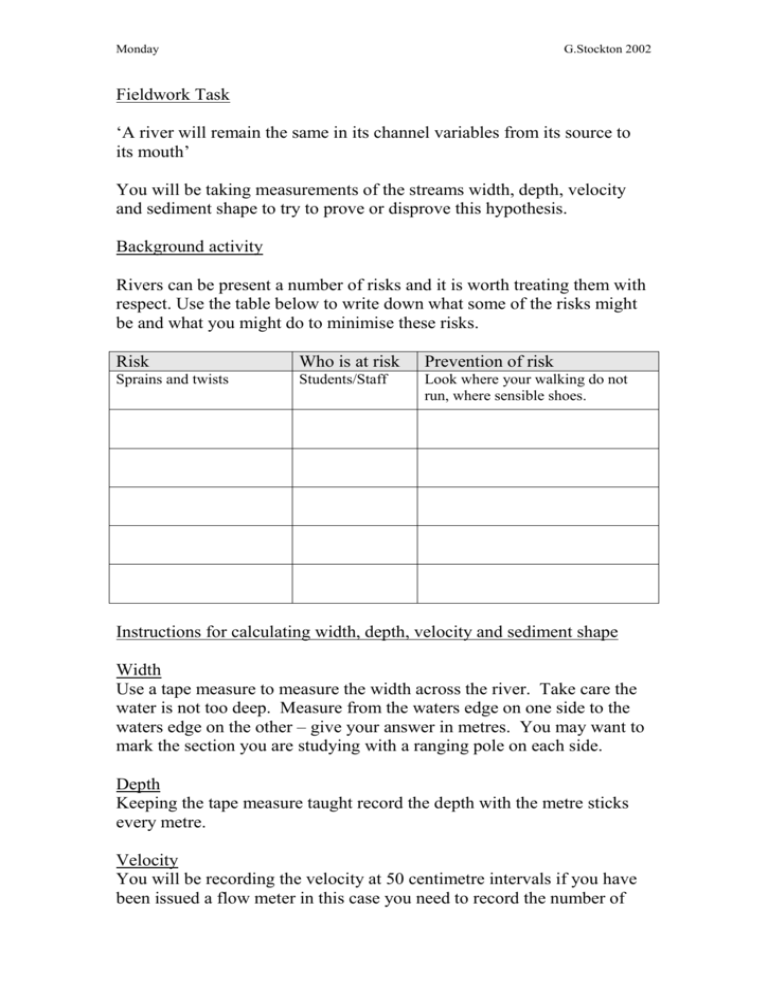
Monday G.Stockton 2002 Fieldwork Task ‘A river will remain the same in its channel variables from its source to its mouth’ You will be taking measurements of the streams width, depth, velocity and sediment shape to try to prove or disprove this hypothesis. Background activity Rivers can be present a number of risks and it is worth treating them with respect. Use the table below to write down what some of the risks might be and what you might do to minimise these risks. Risk Who is at risk Prevention of risk Sprains and twists Students/Staff Look where your walking do not run, where sensible shoes. Instructions for calculating width, depth, velocity and sediment shape Width Use a tape measure to measure the width across the river. Take care the water is not too deep. Measure from the waters edge on one side to the waters edge on the other – give your answer in metres. You may want to mark the section you are studying with a ranging pole on each side. Depth Keeping the tape measure taught record the depth with the metre sticks every metre. Velocity You will be recording the velocity at 50 centimetre intervals if you have been issued a flow meter in this case you need to record the number of Monday G.Stockton 2002 counts the meter records. Check with a member of staff that you are holding the flow metre at the correct depth in the river. If you have been issued with a tape measure a stop watch and a float you need to time how long the float takes to travel 5 metres, repeat the exercise 5 times remembering to catch the float at the end. Sediment shape Use the table which gives a number value to the shape of the sediment shape. Angular 10 9 8 7 6 5 4 3 Sediment Type The substrate is classified according to the Wentworth`s scale. Code Type of subrate Size in mm 1 Fine Organic Material 2 Coarse Organic material 3 Clay, Silt 0.004 - 0.006 4 Sand 0.07 - 2 5 Coarse Sand 6 Fine Gravel 7 Gravel 8 Coarse Gravel 9 Small Stone 10 Stone 11 Big Stone 12 Small Stone Blocks 13 Big Stone Blocks 14 Rough Rock 15 Smooth Rock 2-8 8 - 16 16 - 32 32 - 64 64 - 128 128 - 256 256 - 384 384 - 512 > 512 2 Smooth 1 Monday Site no. 1. Source 2. 3. 4. 5. 6. 7. 8. 9. 10. G.Stockton 2002 Sediment Type Sediment Shape Monday G.Stockton 2002 Fieldwork Task Record your results in the following tables. Site no. Description of site 1. Source Gradient = Altitude = 2. Gradient = Altitude = 3. Gradient = Altitude = 4. Gradient = Altitude = 5. Gradient = Altitude = 6. Gradient = Altitude = 7. Gradient = Altitude = 8. Gradient = Altitude = 9. Gradient = Altitude = 10. Gradient = Altitude = Width (metres) Monday G.Stockton 2002 For use with depth and digital flow metres, table 1 of 2. Site no. 1. 2. 3. 4. 5. Description of site Depth (metres) 1. 2. 3. 4. 5. 6. 7. 1. 2. 3. 4. 5. 6. 7. Velocity (flow metre) 1. 2. 3. 4. 5. 6. 7. 1. 2. 3. 4. 5. 6. 7. 1. 2. 3. 4. 5. 6. 7. 1. 2. 3. 4. 5. 6. 7. 1. 2. 3. 4. 5. 6. 7. 1. 2. 3. 4. 5. 6. 7. 1. 2. 3. 4. 5. 6. 7. 1. 2. 3. 4. 5. 6. 7. Monday G.Stockton 2002 For use with depth and digital flow metres, table 2 of 2. Site no. 6. 7. 8. 9. 10. Description of site Depth (metres) 1. 2. 3. 4. 5. 6. 7. 1. 2. 3. 4. 5. 6. 7. Velocity (flow metre) 1. 2. 3. 4. 5. 6. 7. 1. 2. 3. 4. 5. 6. 7. 1. 2. 3. 4. 5. 6. 7. 1. 2. 3. 4. 5. 6. 7. 1. 2. 3. 4. 5. 6. 7. 1. 2. 3. 4. 5. 6. 7. 1. 2. 3. 4. 5. 6. 7. 1. 2. 3. 4. 5. 6. 7. Monday G.Stockton 2002 Table to be used when calculating stream velocity using floats not the digital flow metre. Five measurements to be taken to form an average (continued, part 2 of table). Site no. Description of site. Time Velocity (seconds) (speed=distance) time 1. 2. 3. 4. 5. 1. 1. 2. 2. 3. 3. 4. 4. 5. 5. 1. 1. 2. 2. 3. 3. 4. 4. 5. 5. 1. 1. 2. 2. 3. 3. 4. 4. 5. 5. 1. 1. 2. 2. 3. 3. 4. 4. 5. 5. 1. 1. 2. 2. 3. 3. 4. 4. 5. 5. Monday G.Stockton 2002 Table to be used when calculating stream velocity using floats not the digital flow metre. Five measurements to be taken to form an average (continued, part 2 of table). Site no. Description of site (over 5 metres) Time Velocity (seconds) (speed=distance) time 6. 7. 8. 9. 10. 1. 1. 2. 2. 3. 3. 4. 4. 5. 5. 1. 1. 2. 2. 3. 3. 4. 4. 5. 5. 1. 1. 2. 2. 3. 3. 4. 4. 5. 5. 1. 1. 2. 2. 3. 3. 4. 4. 5. 5. 1. 1. 2. 2. 3. 3. 4. 4. 5. 5.

